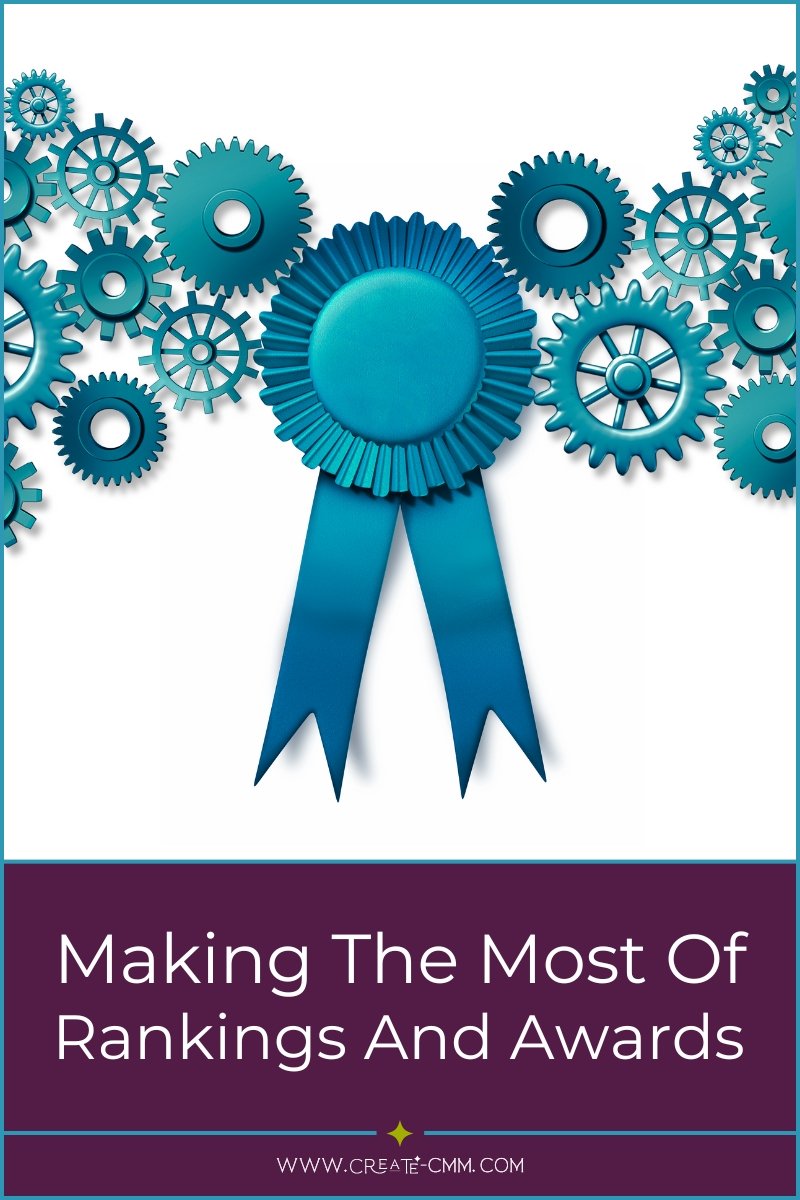Making the Most of the Rankings and Awards Process
A perennial question in legal services marketing is whether recognitions and rankings such as Chambers and Legal 500 actually have any impact on legal hiring. Just this week alone, I listened to two different guests on the same legal marketing podcast discuss this question. (The upshot: rankings are not entirely inconsequential, but they are not as impactful as the ranking organizations want you to believe.)
Participating in these programs is time-consuming and labor-intensive for lawyers and marketing professionals. Beyond the costs of those resources (or the cost of hiring an outsourced resource to assist with the submissions process), these programs are becoming increasingly expensive in other ways. Call it “shrinkflation.” While research-based ranking programs are typically not “pay to play” in that you don’t pay to submit, what you receive “for free” seems to be shrinking as the organizations running these programs offer more and costlier paid add-ons—enhanced firm and lawyer profiles, client and market intelligence reports, and extra “tools” for better submission development and management, for example.
Despite the increasing costs associated with these programs, firms don’t seem to be dropping out of them altogether. The two podcast guests, and a recent article by Bloomberg News, seem to indicate that most of the firms that have historically participated in the submissions process will continue to do so.
But many firms seem to be engaging more strategically, including by taking a critical look at the rankings and recognitions universe (according to the Bloomberg article, there are an estimated 1,000 rankings sites in the U.S.), winnowing down the ones they chose to submit for, and optimizing the resources they dedicate to their awards and recognitions programs.
Research-based rankings require firms to provide a written submission with information on the firm that includes the practices and lawyers, client lists, and work matters (20 in total) as well as a list of clients and professional contacts who are willing to act as references, to speak to the work of the firm, its lawyers and the market as a whole. Of course, the primary objective in putting together these submissions is securing market recognition for your firm, its practices and its lawyers. But the benefits of that hard work (and money) go well beyond a spot in the rankings tables if you (and your lawyers) can view the submission process as both an intelligence gathering and a visibility and engagement opportunity.
For marketing and business development professionals, the annual process of developing the submissions packets can be an exercise in gathering and synthesizing critical information that can be used well beyond the submissions. The representative work matter descriptions and client lists can be used to update the databases and materials from which pitches and responses to RFPs are developed. The process of working with lawyers on the submissions not only provides an excellent engagement and visibility opportunity for the marketing and BD functions but also can spark discussions about practice and industry trends and market opportunities and facilitate broader business development planning. Crafting the written submissions packet can also highlight places where marketing content—lawyer bios, experience lists, and practice and industry descriptions—may not have kept up with the work the lawyers and practices have been engaged in.
For busy lawyers (and those tend to be the ones nominated in rankings submissions), identifying their key clients and notable representations can be a time-consuming process. But taking the time to reflect on the previous year’s work can yield information that can be used beyond the submissions—for identifying practice shifts and business development opportunities, updating the lawyer’s bio and experience lists, and preparing for leadership and compensation committee decisions, among others.
Selecting the right references is key to being recognized by research-based rankings programs—and it’s also an excellent opportunity for lawyers to engage with clients and referral sources. Reaching out to ask for a reference affords lawyers extra non-matter-related touchpoints that can help them stay visible and top of mind with clients. In fact, it’s not unusual for lawyers to come away with new work as a result of calls to ask for a reference. Less formal than a client survey or interview, reference outreach is also a lower-stakes opportunity to ask client service questions and gauge client satisfaction.
Rankings organizations also prefer that references be individuals who can speak not only to the work of the specific lawyer or firm but also to other firms and the market as a whole. Gauging the comfort and ability of a client or referral source to speak to topics beyond the individual lawyer or firm can also yield market intelligence on competitors, trends and potential opportunities.
Leveraging the information-gathering and outreach processes for other purposes is one way to optimize the effort and cost of the submissions season. In a future post, we’ll talk about how to maximize your rankings and recognitions results—without participating in pay-to-play programs.
Featured Articles





